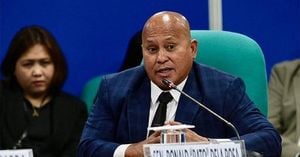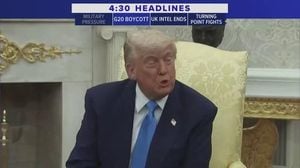Federal workers across the United States are facing a wave of layoffs as the government shutdown, now entering its second week, continues to disrupt daily operations and upend thousands of livelihoods. On October 10, 2025, Russell Vought, Director of the Office of Management and Budget, confirmed that reductions in force—commonly referred to as RIFs—have officially begun. In a terse midday post on X, Vought declared, "The RIFs have begun," signaling the start of what many in Washington had feared would be a sweeping culling of the federal workforce.
The move follows a pre-shutdown memo from the Office of Management and Budget, which directed federal agencies to "consider" terminating employees working in programs that are "not consistent with the President's priorities." While the memo was vague about which specific agencies or roles would be affected, the intent was clear: the administration was prepared to use the shutdown as a lever to reshape the federal government, potentially in ways that could last well beyond the current crisis.
Press Secretary Karoline Leavitt later told reporters that layoffs would "likely" number in the thousands, an estimate echoed by unnamed White House officials who told MSNBC, "We expect thousands of people to unfortunately be laid off due to the government shutdown." CNN’s Alayna Treene reported that fired workers have already begun receiving notices and that "it will be substantial." The Departments of Interior, Treasury, Commerce, Education, Energy, Homeland Security, Health and Human Services, Housing and Urban Development, and the Environmental Protection Agency are among those expected to be hit hardest, according to Politico.
For many federal employees, the news was both shocking and, sadly, not unexpected. Business Insider reported that two dozen workers across agencies have been bracing themselves for bad news since the shutdown began. Some have already been furloughed, while others remain at their posts, working without pay, anxiously awaiting word on their fate. Mark Cochran, a longtime National Park Service employee at Pennsylvania's Gettysburg Military Park and Northeastern regional union president, described the sense of exhaustion and uncertainty. "We've been doing more with less for decades," Cochran told Business Insider, "and if you cut our staffing even more, then things aren't going to get done."
The Departments of Health and Human Services (HHS) and Education confirmed that their employees would be impacted, with cuts targeting roles designated as non-essential. In a statement to Business Insider, HHS said the RIFs are "as a direct consequence of the Democrat-led government shutdown," adding that the agency is "closing wasteful and duplicative entities, including those that are at odds with the Trump administration's Make America Healthy Again agenda." The Department of Homeland Security also announced layoffs within the Cybersecurity and Infrastructure Security Agency (CISA), stating, "During the last administration, CISA was focused on censorship, branding, and electioneering. This is part of getting CISA back on mission."
The layoffs have not gone unchallenged. The American Federation of Government Employees (AFGE), which represents 820,000 government workers, immediately filed a lawsuit seeking to halt the firings. According to AFGE, the administration is "unlawfully laying off employees during the shutdown, and improperly using the shutdown as the basis for the layoffs." The AFL-CIO, the nation’s largest labor union federation, echoed this sentiment, telling Vought, "America’s unions will see you in court." The legal battle adds yet another layer of complexity to an already fraught situation.
For workers, the consequences are deeply personal—and financial. Jill Hornick, a 30-year veteran at the Social Security Administration and a leader in the Chicago-area union, told Business Insider that she and her colleagues are under immense stress. "There are ripple effects," Hornick explained. "Because now all the major downtown areas—Chicago, LA, DC, New York—will not have federal employees spending money because they don't have money to spend. It hurts all these mom and pop businesses, dry cleaners, and restaurants. The damage to the economy is just inexcusable."
On October 10, about 658,000 workers across agencies and the military began receiving partial paychecks for days worked prior to the shutdown. However, some employees will see smaller amounts or miss paychecks entirely until the government reopens. There is additional anxiety surrounding back pay: a Trump administration memo seen by Business Insider states that furloughed federal workers may not receive back pay unless Congress explicitly authorizes it when reopening the government. This is despite a 2019 law widely understood to guarantee back pay to employees following a shutdown, adding yet another layer of uncertainty for those affected.
Since President Trump took office in January, the federal workforce has been shrinking at an unprecedented rate. Over 200,000 federal workers have lost their jobs or left through retirement, buyouts, quits, or deferred resignations. Earlier this year, the Department of Government Efficiency carried out mass firings and budget cuts, which many federal workers say disrupted agency functions and led to untenable workloads. The Supreme Court’s July 8 ruling, which gave the Trump administration the green light to continue mass firings, only accelerated the trend.
The impact of these cuts is already being felt—and could soon ripple out to affect millions of Americans. Delays at Social Security offices, the post office, airports, and national parks are likely if the shutdown and firings persist. Workers at agencies like the Internal Revenue Service, NASA, the Centers for Disease Control, the National Weather Service, and the Department of Defense told reporters they expect more staff cuts in the days ahead. The uncertainty has left many questioning not just their own futures, but the future of government services on which so many rely.
Amidst the political stalemate between Democrats and Republicans over spending and healthcare plans, there is no clear end in sight to the shutdown. The administration’s stated goal of eliminating "wasteful" programs and refocusing agencies on the President's priorities has been met with fierce resistance from unions and affected workers alike. As the legal battles play out and the shutdown drags on, the fate of thousands of federal employees—and the services they provide—hangs in the balance.
For now, federal workers and the communities that depend on them are left waiting, watching, and hoping for a resolution that seems just out of reach.




